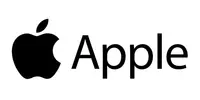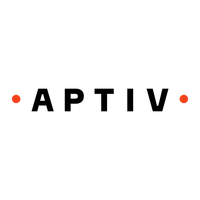Exceptional climate courses, a thriving global community, and live events with the world's top climate experts—all in one membership.
$49/mo
Full access. Cancel anytime
On-demand courses, a global community and exclusive events — everything in one Terra.do membership
Trusted by learners from world's leading organizations
Climate fellowship
25% off for Terra.do members
Cohort starts: Mar 17
Dive into the most structured, up-to-date content on climate science, impacts, and solutions so that you can work on the solutions that matter.
80+ countries
5,000+ fellows
60+% career transition rate
Browse our on-demand courses
A four-week online course focused on scaling data use to accelerate sustainability initiatives, developing a fit-for-purpose data and AI strategy to streamline reporting, drive informed decisions, mobilize teams, and foster innovation, with a special emphasis on climate and nature.
CEO and Founder Shyftr; Ex-CDO
View Course
Four-week course covering climate-related financial disclosures and reporting requirements that have increasingly become mandatory in markets across the world.
Climate Consultant, former Big 4 Director...
View Course
This four-week course equips you with tools, and strategies to mitigate AI’s climate impact, optimize AI products for sustainability, and implement responsible, energy-efficient AI technologies
View Course
A four-week online deep-dive into the carbon dioxide removal (CDR) portfolio, covering advantages, challenges, and risks of currently pursued approaches to ensure CDR investments align with emissions reduction efforts.
Former Direct Air Capture and Storage lead at...
View Course
In this course, you’ll explore the science, technology, and policy behind carbon dioxide removal (CDR), from forests to direct air capture. Through expert insights and case studies, you’ll assess its potential, risks, and role in climate mitigation.
Created by the Terra.do learning team and ove...
View Course
A four-week online course that explores the fundamental principles, mathematical concepts, and interconnections driving global clean energy transitions.
Clean Energy Senior Specialist at Con Edison...
View Course
As a Terra.do member, you get access to our community's collective wisdom, expertise, and resources to help you upskill and advance your climate career.
$49/mo
or $37/mo when paid annually
7-Day Free trial. Full access. Cancel anytime
200+ Mentors
80+ Countries
5,000+ Fellows
Career Tips from those leading climate action in energy, policy, food, carbon markets and many more sharing their lessons from the frontline with events.
Fresh Insights on all things climate through hundreds of hours of curated content, masterclasses from experts and a knowledgeable community of peers.
Get introduced to a nurturing community of industry mentors and peers who've transitioned into climate work to help guide your career in climate.
Meet peers and mentors at local events and networking sessions. From NYC to Berlin, Bangalore, Paris and more, our members regularly connect and learn.

Mar 10, 25 | 12:00PM ET / 9:00AM PT
Advocacy & Activism • Politics

Mar 10, 25 | 1:00PM ET / 10:00AM PT
Climate Activism and Advocacy • Environment • Advocacy & Activism

Mar 14, 25 | 11:00AM ET / 8:00AM PT
Environment

Apr 3, 25 | 12:00PM ET / 9:00AM PT
Big Data Analytics • Environment

Apr 10, 25 | 12:00PM ET / 9:00AM PT
Clean Energy • Environment

Apr 21, 25 | 11:00AM ET / 8:00AM PT
Professional Development • Solar • Clean Energy

Advocacy & Activism • Sustainability • Ocean Pollution

Software/Tech

Climate Tech
Explore 65,000+ climate jobs at 16,400+ companies worldwide, spanning every major climate solution—from renewable energy to sustainable finance.
Find climate jobsDiscover roles at innovative climate companies
16k+ others. Browse climate companies
The climate economy covers 50%+ of the world's GDP, and there's a climate job for you in this economy no matter what your role is. Browse jobs by roles
Upskill yourself and make your climate career transition
Give yourself the edge by learning the key skills needed for the climate economy. Our learners are working at groundbreaking climate companies
$49/mo
or $37/mo when paid annually
7-Day Free trial. Cancel anytime

From: Digital Content Manager (Contract) at Wildgrid
To: Executive Assistant at David Energy

From: Policy Engagement Advisor at Elemental Impact
To: Program Associate at Blue Crab Strategies

From: Chief Commercial Officer at Abatable
To: Commercial Director - Carbon at BURN

From: Underwriter at Greystone
To: Project Lead at Bay Area Air Quality Management District

From: Director of Strategy at Medius
To: Technical Specialist at Colorado Department of Public Health and Environment

From: Outside Sales at Beacon Building Products
To: Offgrid Director of Sales & Solutions at Wasted*
and thousands more working at:

"I loved the Soil Health and Regenerative Farming course. It was short but concentrated, and I've learned a ton! Most importantly, I understood that I can do so much myself using my own hands, knowledge, logic, and senses, by being humble and learning from nature. I discovered that there's so much more to learn and got a clear direction where to start."
Olga Shavrina
Product Manager at JOB TODAY (Spain)

"What I loved about this course was that while the focus was on farming in terms of producing food, I could apply the principles to my own context (creating native pollinator gardens in Ontario)! Of course, I have bigger dreams of a) spreading pollinator gardens outside of my own backyard, and b) possibly turning a plot of land into a regenerative farm."
Rebecca Babcock
Research Associate at PLACE Centre (Canada)

"This course gives a fantastic overview of how to decarbonize software and perfectly suits the Product Management audience. It's very practical and actionable as well. You can start "doing." You can start impacting."
Nolwenn Godard
VP Climate at Mobioos

"Taking the Digital Product Decarbonization course at Terra.do has been a game-changer in my journey as a Senior Product Designer. As someone passionate about creating meaningful, user-centered experiences, I have always been aware of the environmental impact our digital products can have. This course opened my eyes to practical strategies for reducing the carbon footprint of the products I design, without compromising on performance or user experience."
Nelly Hempel
Senior UX Designer / Product Designer
Learn the skills to work on climate, find your change-making community, and drive real-world impact
$49/mo
or $37/mo when paid annually
7-Day Free trial. Full access. Cancel anytime






































